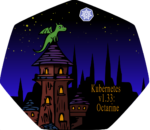
Linkerd 2.14 introduces enhanced multi-cluster support for networks where clusters share a flat architecture. This enables pods from different clusters to directly establish TCP connections.
This update introduces a “gateway-less” mode for cross-cluster communication, improving performance by reducing latency, enhancing security by maintaining workload identity in mTLS calls between clusters, and lowering cloud costs by reducing traffic through the multi-cluster gateway.
The new “gateway-less” mode is an optional addition and works well in flat network environments. In cases where heterogeneous networks prevent flat architectures, Linkerd’s existing gateway-based method remains functional.
This updated multi-cluster support maintains the key principle of Linkerd’s design: isolating security and failures by keeping clusters independent. Each cluster has its own Linkerd control plane, so the failure of one cluster doesn’t impact the service mesh in other clusters. Additionally, Linkerd offers robust tools like cross-cluster failover to automatically redirect traffic to surviving clusters.
“In the Linkerd 2.14 release we’re happy to report that Linkerd is now fully conformant with the mesh profile of the Gateway API. This means that Linkerd now uses the core gateway.networking.k8s.io types, and that features like retries, timeouts, and progressive delivery are now fully configurable via these types without the requirement to use the earlier ServiceProfile resources,” William Morgan, CEO at Buoyant, creators of Linkerd wrote in a blog post.
Starting with the Linkerd 2.12 release, the project has been embracing Kubernetes’s recent Gateway API as the fundamental configuration method. This encompasses critical features like zero trust authorization policies and dynamic request routing. The decision to adopt the Gateway API holds numerous advantages for users. It establishes standardized means for configuring intricate resources like categories of HTTP requests, delivers a consistent API for both ingress and service meshes, and aligns with Linkerd’s minimalist approach, according to Morgan.








